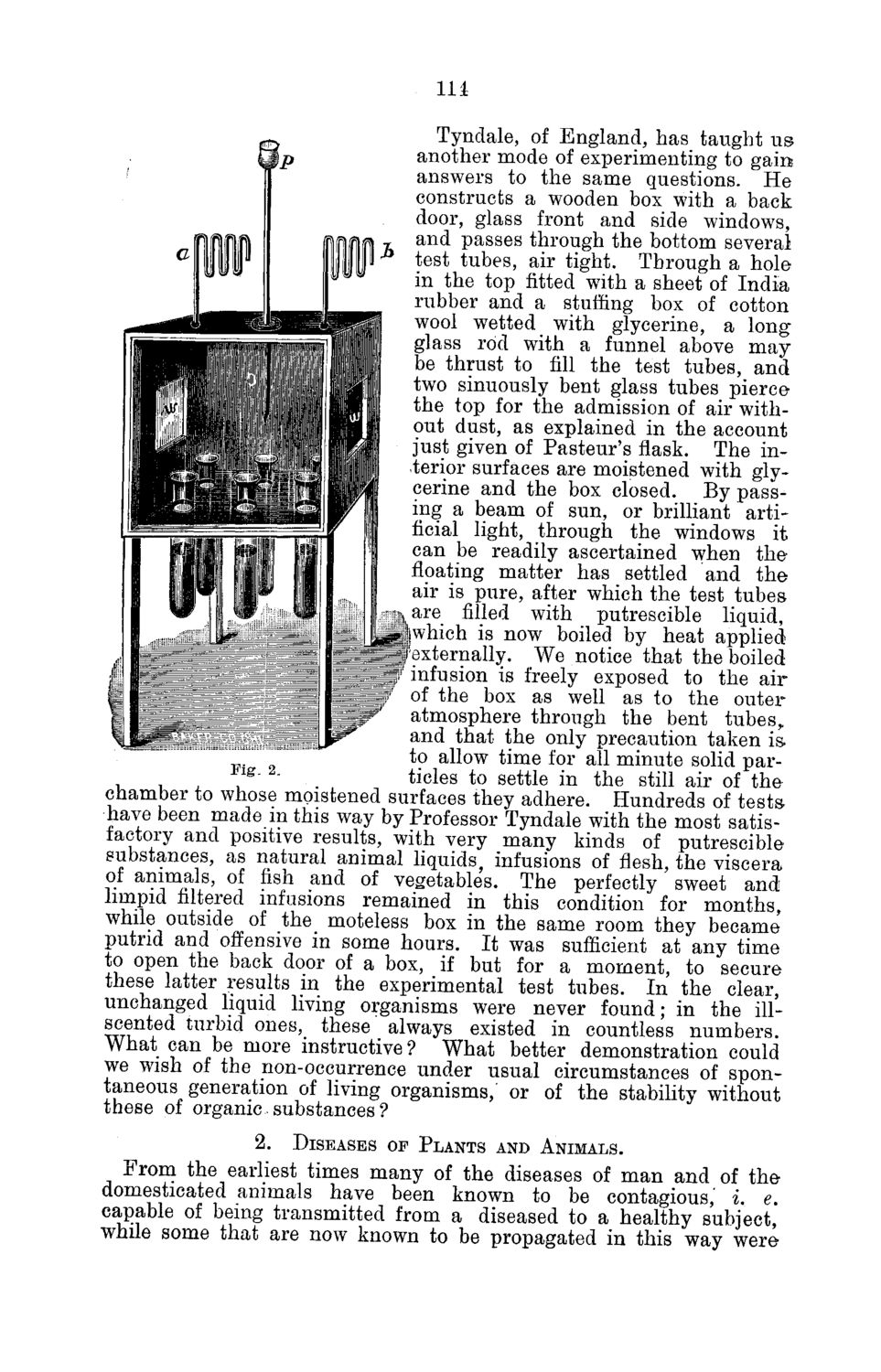| |
| |
Caption: Board of Trustees Minutes - 1882
This is a reduced-resolution page image for fast online browsing.

EXTRACTED TEXT FROM PAGE:
Ill Tyndale, of England, has taught u& another mode of experimenting to gain answers to the same questions. He constructs a wooden box with a back door, glass front and side windows, and passes through the bottom several test tubes, air tight. Through a hole in the top fitted with a sheet of India rubber and a stuffing box of cotton wool wetted with glycerine, a long glass rod with a funnel above may be thrust to fill the test tubes, and two sinuously bent glass tubes pierce the top for the admission of air without dust, as explained in the account just given of Pasteur's flask. The interior surfaces are moistened with glycerine and the box closed. By passing a beam of sun, or brilliant artificial light, through the windows it can be readily ascertained when the floating matter has settled and the air is pure, after which the test tubes j^are filled with putrescible liquid, j|which is now boiled by heat applied f externally. We notice that the boiled ' infusion is freely exposed to the air of the box as well as to the outer atmosphere through the bent tubes, and that the only precaution taken is. to allow time for all minute solid par, . . tides to settle in the still air of the chamber to whose moistened surfaces they adhere. Hundreds of tests have been made in this way by Professor Tyndale with the most satisfactory and positive results, with very many kinds of putrescible substances, as natural animal liquids, infusions of flesh, the viscera ol animals, of fish and of vegetables. The perfectly sweet and limpid filtered infusions remained in this condition for months while outside of the moteless box in the same room they became putrid and offensive in some hours. It was sufficient at any time to open the back door of a box, if but for a moment, to secure these latter results in the experimental test tubes. In the clear, unchanged liquid living organisms were never found; in the illscented turbid ones, these always existed in countless numbers. What can be more instructive? What better demonstration could we wish of the non-occurrence under usual circumstances of spontaneous generation of living organisms, or of the stability without these of organic substances ? 2. DISEASES OF PLANTS AND ANIMALS. From the earliest times many of the diseases of man and of the domesticated animals have been known to be contagious, i. e. capable of being transmitted from a diseased to a healthy subject, while some that are now known to be propagated in this way were
| |